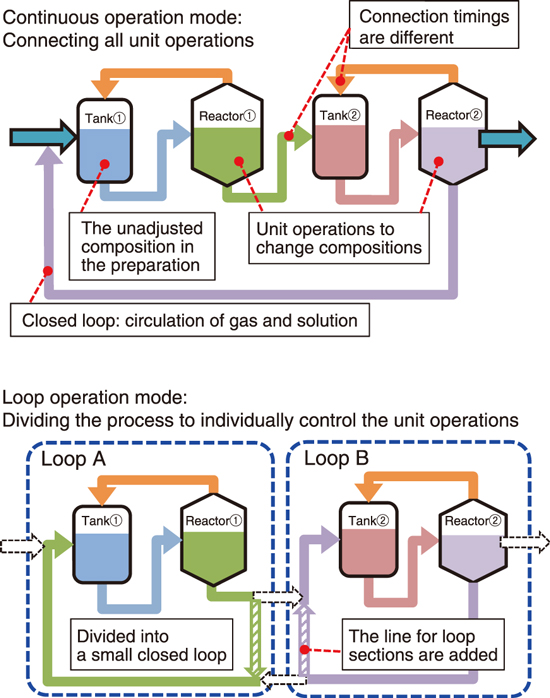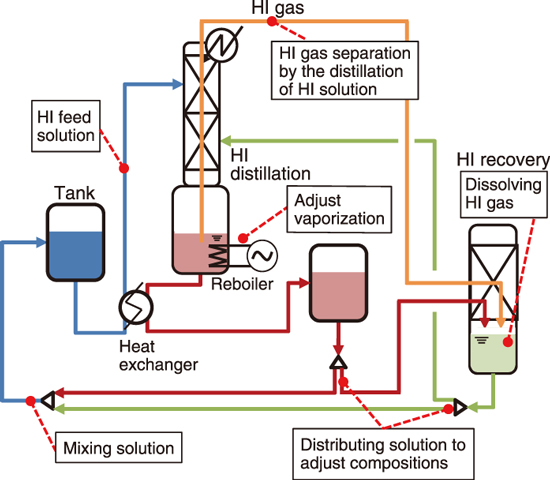
Fig.6-9 Comparison of the continuous and loop operation modes

Fig.6-10 Example of a closed-loop process configuration: HI distillation section

Fig.6-11 Measurement result of continuous H2 production operation
The water-splitting hydrogen (H2) production, namely, the iodine–sulfur (IS) process as a heat-based application of high-temperature gas-cooled reactors has been investigated to realize H2 economy. The IS process involves the chemical reactions of sulfur and iodine (I2) and the flow of fluids with different compositions, such as I2 and hydrogen iodide (HI). For stable longer-term H2 production, composition fluctuations of these fluids should be canceled at the early stage of the operation.
In the previous operating procedure, many unit operations, such as those involving separators and reactors, were simultaneously connected. In this case, the deviation from the prescribed compositions might be generated by various causes: for example, an unadjusted composition during preparation and differences in the connecting timings of flows during start-up. Moreover, the fluids were circulated in all unit operations because the IS process is a large closed cycle. Therefore, the fluctuation arising in a certain reactor could affect all unit operations in the process. So far, it is challenging to predict the effect of such fluctuations on the start-up procedure, and a large fluctuation, which can cause pipe clogging, at the early stage lasting several hours could prevent the realization of stable longer-term H2 production.
To solve this issue, closed loops to subdivide the process configuration are introduced as a new operation mode to individually control the composition fluctuation in each unit operation (Fig.6-9). All unit operations are categorized into subsections. The categorized subsections individually establish reversible and closed-loop processes. Based on this idea, the IS process system was reconstructed as four independent closed-loop sections (Fig.6-10). The new operating procedure that enabled us to commence stable H2 production was proposed by using the subdivided closed-loop sections.
The existing H2 production test facility was updated to execute the new closed-loop operation procedure. Through this procedure, 150 h of H2 production was successfully achieved (Fig.6-11). As a next step, we are developing an automatic control system to stabilize the long-term operation.
(Nobuyuki Tanaka)